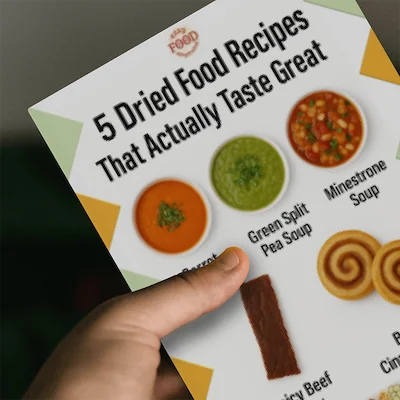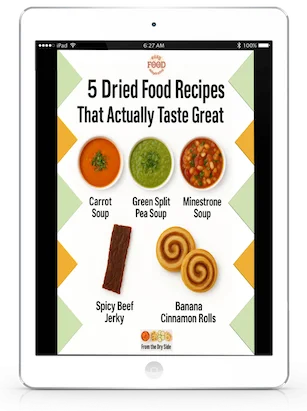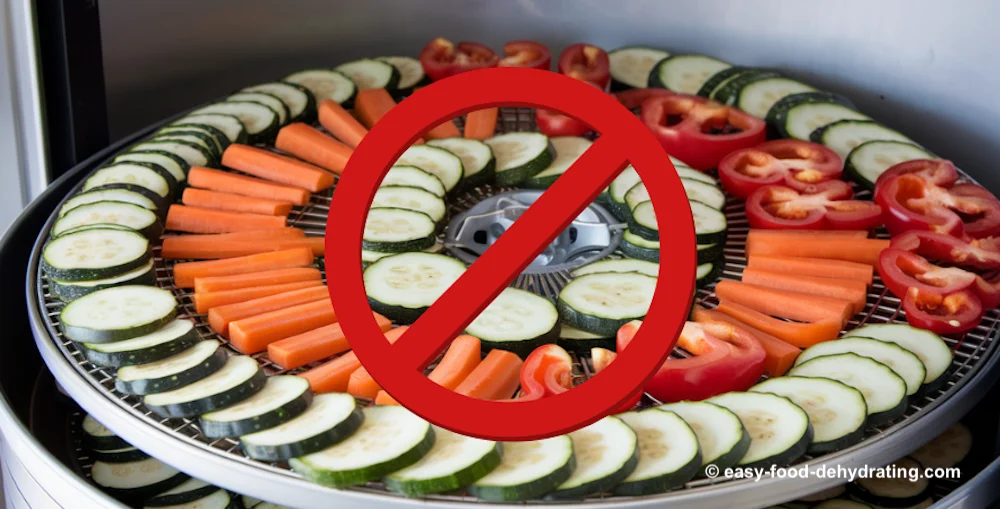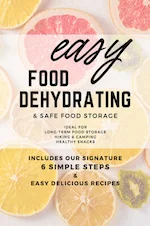- Home
- Easy Dehydrated Food Recipes
- Ratatouille with Dehydrated Vegetables
Ratatouille with Dehydrated Vegetables:
A Classic French Dish!

Susan Gast, Author
Blogger at Easy Food Dehydrating | A New Sober You | Bored Boomers | Beesville Books
This vibrant ratatouille with dehydrated vegetables is a veggie-packed dish bursting with color, flavor, and a rich aroma that will make your kitchen feel like a European bistro!
Serve it on its own, or pair it with rice or orzo for a hearty, satisfying meal.
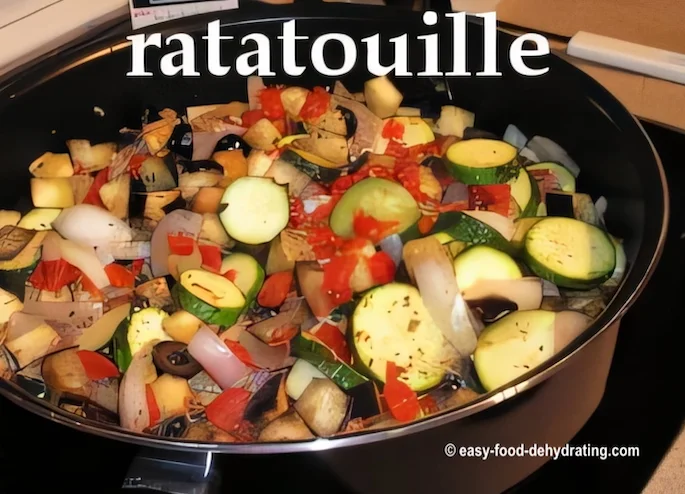
Whether you say rat-a-too-eee or ra-ta-twee—one thing’s for sure: this dish is pure veggie goodness! Plus, just look at those colors…
Guaranteed to make your kitchen smell like a vacation in Europe!

Ratatouille with Dehydrated Vegetables Recipe
Ingredients
-
1-1/2 cups dehydrated zucchini (or yellow squash—or combo!)
- 1/2 cup dehydrated onion rings
- 1/4 cup dehydrated mushrooms
-
3 slices dehydrated elephant garlic, crumbled
- 1 whole fresh eggplant, cubed (I leave the skin on, so wash well first)
- 10 extra large black olives cut in half
- boiling water (for dehydrated items)
-
2 tablespoons olive oil
- salt* and pepper to taste
- 1 14.5 oz. can small-diced tomatoes
- 1 cup of vegetable stock
-
1 tablespoon dried Italian Herb blend (more or less, to taste)
NOTE: Optional Orzo, 1 cup
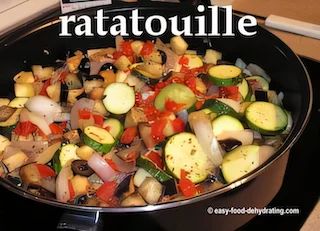
Instructions
- Use the freshly boiled water to rehydrate the dehydrated items above. Let sit until they have plumped up.
- Heat olive oil in a large saucepan, and sauté the eggplant.
- Pour off excess water from dehydrated veggies and add the veggies carefully to your saucepan as water can spit in hot oil.
- Add 1 cup of vegetable stock and add the Italian seasoning.
- Add the sliced olives.
- Add the mushrooms.
- Cook for 15 minutes or until the vegetables are tender.
- If adding the orzo, add it in at step 4. You may need to add a little more boiled water too, if you find the orzo drinks up your stock too fast. Orzo only needs around 10 minutes to cook—half the time of rice. Adding rice (or orzo), to me, makes this Ratatouille dish like a risotto!
*IF you need to add salt, do so, BUT be careful NOT to over-salt as the bouillon has salt in it.
Nutrition Information
- Servings: 8 servings
- Calories: 100kcals
- Fat: 4.7g
- Protein: 3.5g
- Carbohydrates: 13.5g
Nutrition Information with Orzo
- Servings: 8 servings
- Calories: 196kcal per ounce
- Fat: 5.3g
- Protein: 6.3g
- Carbohydrates: 35.1g

Fantastic Colorful Spatula Set...
I use this silicone spatula set... All. The. Time.
Great buy over at Amazon.
They have other colors too such as turquoise, grey, black, blue, purple, and a multicolored set!
As an Amazon Associate, I earn commission from qualifying purchases. The price you pay does not increase. Read disclosure here.
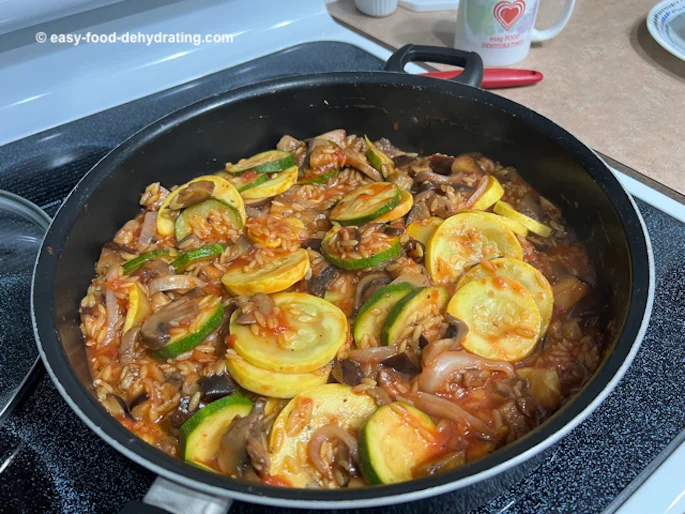 Ratatouille WITH ORZO, ready to eat!
Ratatouille WITH ORZO, ready to eat!Want to Use Fresh Ingredients?
If you want to use fresh ingredients that you may have on hand, do this:
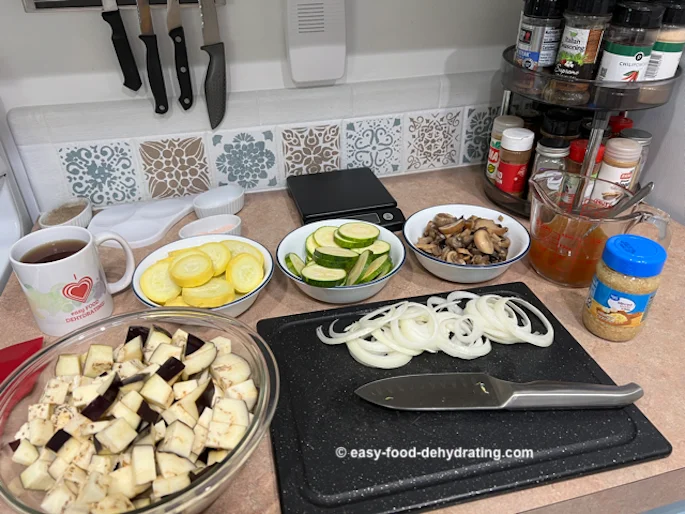
Exchange the dry ingredients in the recipe, above, for these fresh ingredients listed below!
- 2 large yellow squash or green zucchini (or one of each as a combo!) washed, peeled, and sliced
- 1/2 large onion, peeled and diced
- 1 cup fresh sliced mushrooms
- 3 slices fresh elephant garlic, or 1 and 1/2 small cloves of "regular sized" garlic
Note from my hubby: "Will you cut the squash in half next time?"
My answer: Nope. (Being awkward)
Hubby: "Can you add paprika and rosemary?"
Answer: Yep. (Being accommodating)
He also loves this ratatouille with grated cheddar cheese on top! Typical cheesy-guy thing...
NOTE: If you're adding orzo, keep an eye on the pan. Even though my saucepan is nonstick, make sure to turn the heat down low and stir/scrape the bottom while turning over the ingredients with a soft silicone spatula.
Add a dash of water if the ratatouille seems dry.
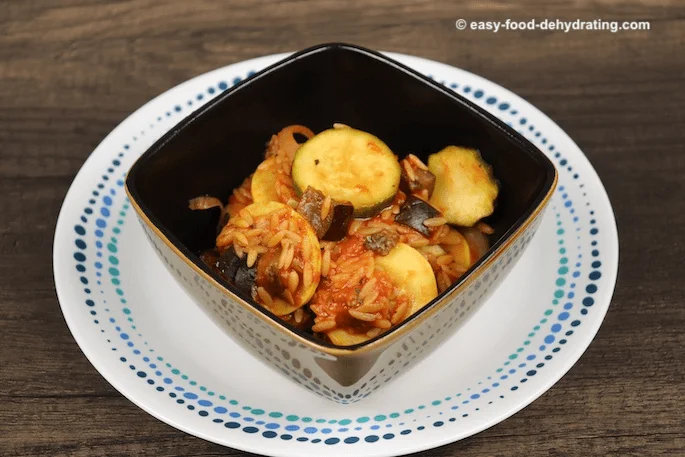 Ratatouille with Orzo... yummy!
Ratatouille with Orzo... yummy!How to Make EASY MEALS with Dried Food
20 Taste-Tested Easy Recipes
Containing dehydrated food... that even your kids and spouse will eat!
🍕 Pizza! 🥧 Shepherd's Pie! 🥘 Beef Stew!
plus Cauliflower Soup and Cauliflower Mash, along with crazy Carrot Soup!
Decadent Desserts:
Carrot Cake and Cranberry Pineapple Pie!
and more...
Fresh food ingredient amounts are included for when you have fresh food on hand.
See which recipes are included here.
As an alternative to the orzo, make some white or brown rice to serve with these vegetables.
This dish smells so good when it is cooking; it fills your kitchen with a very pleasant aroma of the Mediterranean!
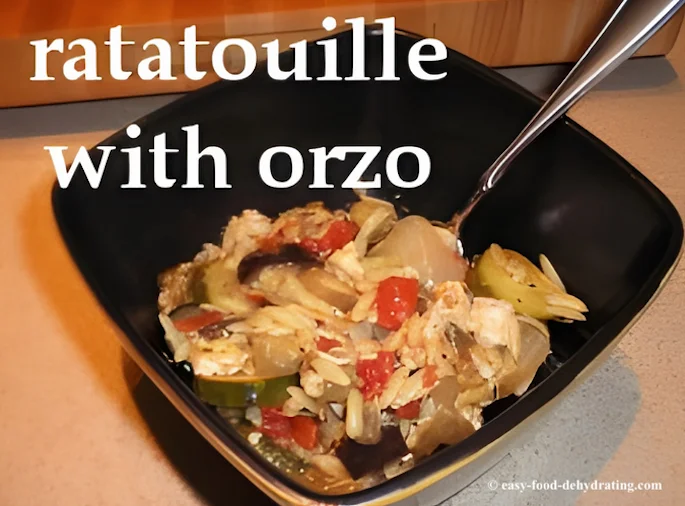
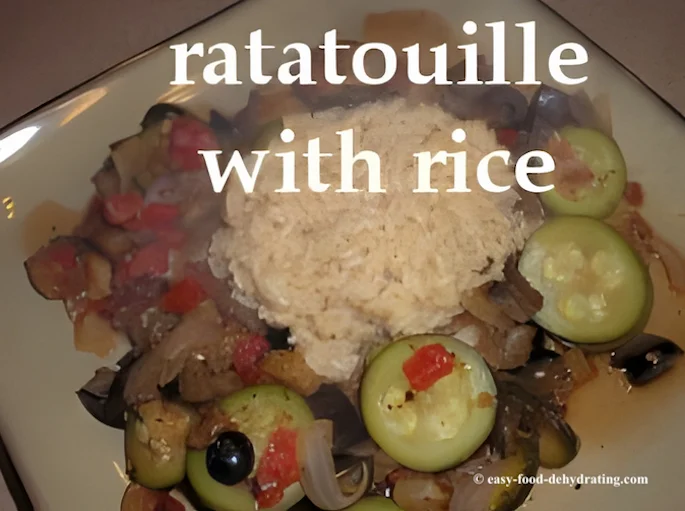
Use the ratatouille as a vegetable side dish, but with the addition of rice or orzo, it makes a complete meal.
When you've got leftover rice, remember to save it to make Ratatouille with Rice.
If You're Wondering, "What is Orzo?" - Keep Reading!
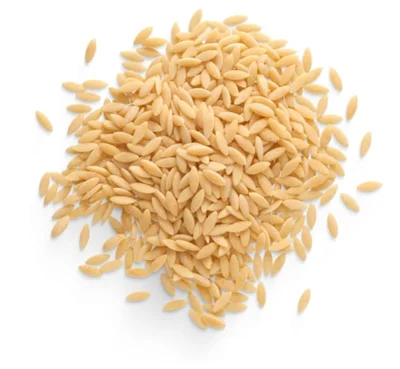 ORZO: looks yellow and is 'fatter and flatter'
ORZO: looks yellow and is 'fatter and flatter'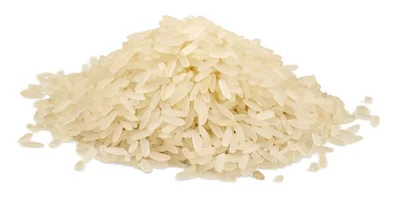 RICE by comparison: is whiter, and looks 'slimmer'
RICE by comparison: is whiter, and looks 'slimmer'NOTE: Orzo is a type of pasta that is shaped like a large grain of rice.
Key Facts About Orzo:
- The name orzo comes from the Italian word for "barley," as it closely resembles a barley grain.
- Traditionally made from semolina or durum wheat, it has a chewy, slightly nutty flavor similar to rice or barley.
- Orzo is widely used in Mediterranean cuisine, especially in Italy, Turkey, and Greece.
- The most common size is about 3mm in diameter, but it can range from 2mm to 5mm in size.
- It’s a versatile ingredient, perfect for soups, salads, casseroles, stir-fries, and side dishes.
How to Cook Orzo:
- Bring a pot of lightly salted water to a boil.
- Add the orzo and cook for 7-9 minutes until al dente.
- Drain and rinse in a colander, then serve as desired—plain, with a drizzle of olive oil, or mixed into dishes.
- Cooking ratio: Use 1 cup of dry orzo to 4 cups of water or broth, seasoning to taste.
- For extra flavor, cook orzo in broth, tomato sauce, or infused with herbs for a more aromatic dish.
Why Orzo Cooks Faster than Rice
'The reason why orzo cooks faster than rice is because orzo is actually a type of pasta, while rice is its own separate grain.
Some key differences that cause the cooking time variance:
- Pasta is made from wheat flour while rice is made from rice grains.
- The wheat flour in pasta contains gluten, which gives it a chewy texture. Rice does not contain gluten.
- Pasta is made with semolina or durum wheat flour which is coarser than all-purpose flour. This coarser flour helps pasta retain its shape better.
- Rice has a higher starch content which requires more time to gelatinize and soften during cooking.
- Pasta is dried during production which removes more moisture allowing it to cook quicker (than rice). Rice still contains its original moisture.
If You're Into Gardening...
Coming up is info. on Zucchini, Onions, and Mushrooms which are all ideal for ratatouille with dehydrated vegetables.
What Are the Different Types of Zucchini?
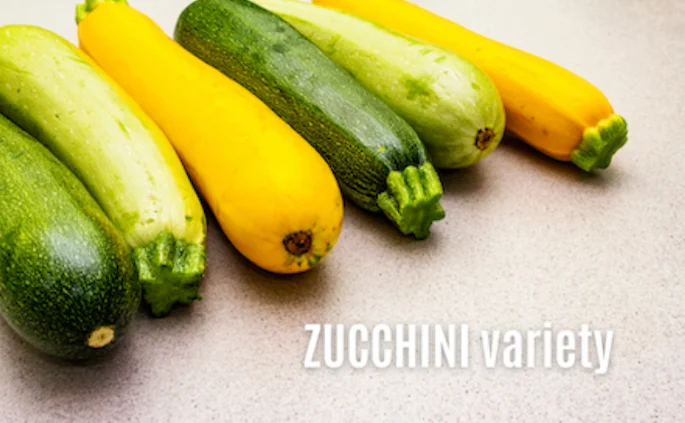
There are many different types of zucchini that you can grow. Some of the most popular varieties include:
- Black Beauty
- Costata Romanesco
- Eight Ball
- Golden
- Ronde de Nice
Is Yellow Zucchini Also Known as Summer Squash?
Yes, yellow zucchini is also known as summer squash. Summer squash is a type of squash that grows on a vine and has a soft, edible skin. Summer squash can be eaten raw or cooked.
Best Areas to Grow Zucchini
Zucchini is a type of squash that grows on a vine. Zucchini can be green, yellow, or white in color. The best areas to grow zucchini are in an area with full sun and well-drained soil.
Zucchini should be watered regularly and should be fertilized every year.
When Are Zucchini Ready to Harvest?
Zucchini is usually ready to harvest in late June or early July. They can be harvested by hand or with a garden hoe.
What are the Different Types of Onions?
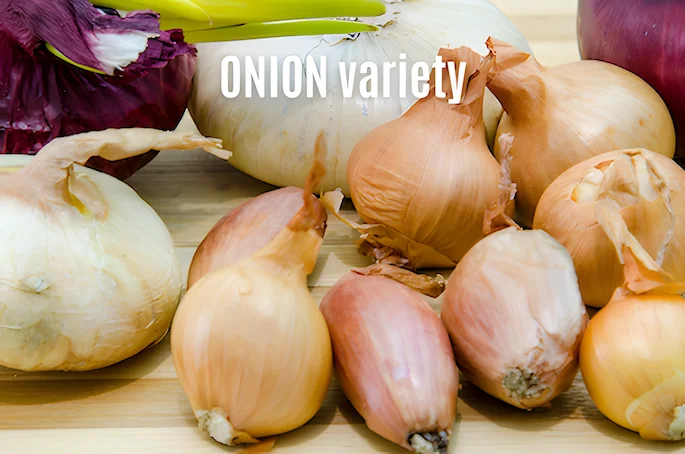
There are many different types of onions that you can grow. Some of the most popular varieties include:
- Cippolini
- Yellow
- Red
- White
- Sweet
Best Areas to Grow Onions
Onions can be grown in many different areas. The best areas to grow onions are in an area with full sun and well-drained soil. Onions should be watered regularly and should be fertilized every year.
When are Onions Ready to Harvest?
Onions are usually ready to harvest in late June or early July. Onions can be harvested by hand or with a garden hoe.
What are the Different Types of Mushrooms?

There are many different types of mushrooms that you can grow. Some of the most popular varieties include:
- Button
- Cremini
- Portobello
- Shiitake
- Oyster
Best Areas to Grow Mushrooms
Mushrooms are a type of fungi that come in many different shapes, sizes, and colors. They can be found all over the world, growing in both natural and man-made habitats.
Mushrooms do not require complete darkness to grow, but they are typically grown in dark or dimly lit environments.
How to Grow Mushrooms
If you’re thinking about growing mushrooms, here are a few tips to keep in mind:
- Choose a mushroom variety that is easiest to grow for beginners, like oyster or button mushrooms. Make sure to purchase mushroom spawn or a grow kit specific to the type you want to grow.
- Sanitize your growing area and equipment. Mushrooms are very susceptible to contamination so it's important to sterilize any surfaces, tools, and containers you'll use. You can use a weak bleach solution, hydrogen peroxide, or isopropyl alcohol.
- Mushrooms need a substrate to grow on. This can be anything from wood chips to straw or composted manure.
- Introduce mushroom spawn to the substrate. Mix the spawn throughout the substrate following instructions for your variety.
- Allow adequate airflow. Mushrooms need oxygen to grow. Avoid compacting the substrate too densely and fan or circulate air daily.
- Mushrooms also need (some) darkness and high humidity to grow properly. A good way to create this environment is by using a plastic bag or terrarium. Some mushroom species, such as button mushrooms, require a brief exposure to light to initiate the formation of pinheads (young mushrooms). However, after this initial light exposure, they are typically grown in darkness to encourage proper development/growth.
- Mushrooms typically take about 2-4 weeks to grow from spores to full-sized mushrooms.
- Harvest your mushrooms when they are big enough to eat. This is typically when the caps are fully open. Pick promptly to allow new mushrooms to keep fruiting. Multiple flushes are possible from one substrate.
If you’re looking for a crop that is relatively easy to grow and can be used in many different recipes, mushrooms are a great option.
When are Mushrooms Ready to Harvest?
Thanks for stopping by ratatouille with dehydrated vegetables page and I hope you'll cook some up soon!
Grab 5 Dried Food Recipes You'll Actually Love
Don't forget to grab a copy of our all new
5 Dried Food Recipes (That Actually Taste Great)
They're my all-time favorite easy dried food meals!
Get it here right now.
For Free!
Before You Go...
If you like the content, please give me some love by clicking on the 🩷 in the lower right-hand corner (on just about all my pages). This signals to me that you find it enjoyable and useful.
And don’t forget to grab your FREE 5 Dried Food Recipes via the opt-in form — they're waiting for you! Thank you so much! (Get it here).



